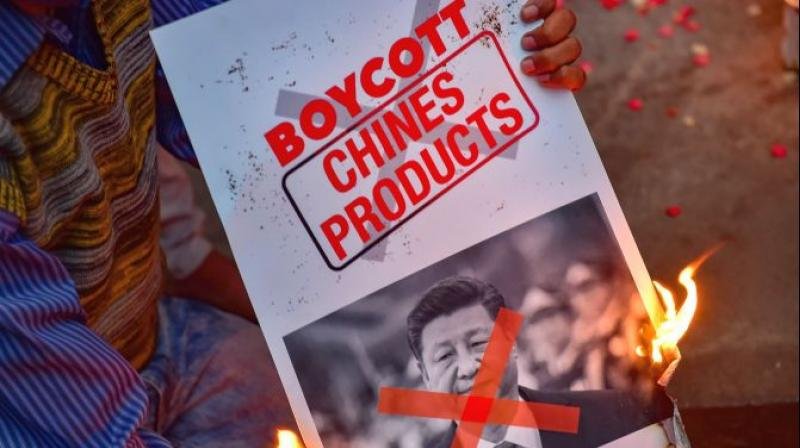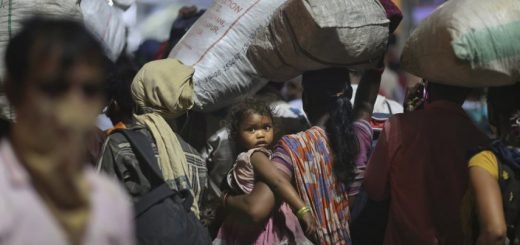Boycott China – Can India pay the price?

The all-new Anti-China protests have erupted since the Indian Army lost the lives of 20 Soldiers, including a commanding officer in a violent face-off between the Indian and Chinese troops, on the night of 15-16 June, since the last firing incident on October 20, 1972. Protests erupted since then, and protestors started demanding Boycott of Chinese Goods. In addition, the Government of India on the night of 29 June banned 59 Chinese Mobile Apps in a targeted move to ensure safety and sovereignty of Indian Cyberspace and to safeguard interests of Crores of Indian internet users. All of these advancements boils down to one question – Can India economically leverage the loss caused by factors revolving around China?
Trade ties between China and India have rapidly grown since the early 2000s from under $2 Billion in the year 2000 to $38 billion in 2008, growing many folds, when China became India’s biggest trading partner. But, there’s an underlying fact – India imports from China more than it exports to the country. Between 2018-19, India Imported goods worth $88.8 Billion from China( Inclusive of Hong Kong), which makes the most populous the largest source of imports accounting to more than 17% of India’s imports. What makes the nature of Import – Export relationship between the neighbours is, are the nature of Goods traded between them. India’s exports to China majorly consist of “Raw Materials”, while China Imports “Value Added Goods” (also finished goods) to the former. This creates an evident disruption in the balance of trade between the neighbours. Data from the World Bank also points that,
“50% of India’s imports from China are either Capital or Intermediate Goods”, which brings us to the next problem point, independence on China for Intermediate Goods. How did China raise to A Monopoly Position in the whole world?
Economic Rise of China
China’s rise often dates back to 1978, when the country embarked on a major economic reform program. “In an effort to awaken a dormant economic giant, it encouraged the formation of rural enterprises and private businesses, liberalized foreign trade and investment, relaxed state control over some prices, and invested in industrial production and the education of its workforce. By nearly all accounts, the strategy has worked spectacularly” quotes the IMF.
The second wave of the world’s populous economy’s growth mainly rose with the advantage of its huge population. This gave the country an upper hand and it managed to put its human resources to the best use. This made China, the best destination for assembling goods, consequently making it the top market for assembled goods. This slowly led the country to a forefront global position, consequently the epicentre for trade to evolve around. The interdependence of countries on China started increasing, repercussions of which is the top position the country holds in the global supply chain.

What does India have in store?
Trade ties between the two Neighbours date back to History. There is heavy reliance on Chinese imports for raw materials in the automobile and the pharmaceutical industry, in some cases ranges around 90%. There also exists heavy dependence in case of solar requirement of the National Solar Mission – around 84%. Majority of India’s Unicorn including Zomato, Paytm, Big Basket, and Ola get funded by China. There’s a brighter side to the same, dumping of Chinese products in the Indian Markets was seen as a threat to Local Small and Medium enterprises ( MSME’s), since the prices of locally produced goods are in a small proportion higher than the imported ones. This can be seen as one of the major advantages to the country. The move towards Banning of 59 Chinese Mobile Apps, can lead to the closure of offices of those apps in India, leading to losses of a few more jobs in the economy.
Can India Leverage the Gap
Prime Minister Modi in his address to the nation stated the importance of Self – Sufficiency while launching the “Aatmanirbhar Bharat Abhiyan”. With huge potential and conducive climate for India to move towards the thought of Self-Sufficiency, the country’s Small and Medium enterprises should exploit its resources to the best. Target points lie in sensitive sectors like Automobile and Electronic Gadgets where the impact can be worst seen, and it is a long way ahead.
According to data from the Export and Import Data bank, top three imports stand as, electrical Equipment, Nuclear Reactors and Chemicals respectively. The Indian smartphone industry is also heavily dependent on the country, according to the latest counterpoint report. It may take a long time before India gets settled with producing locally, and identifying and developing alternative sources is the key to success.



















